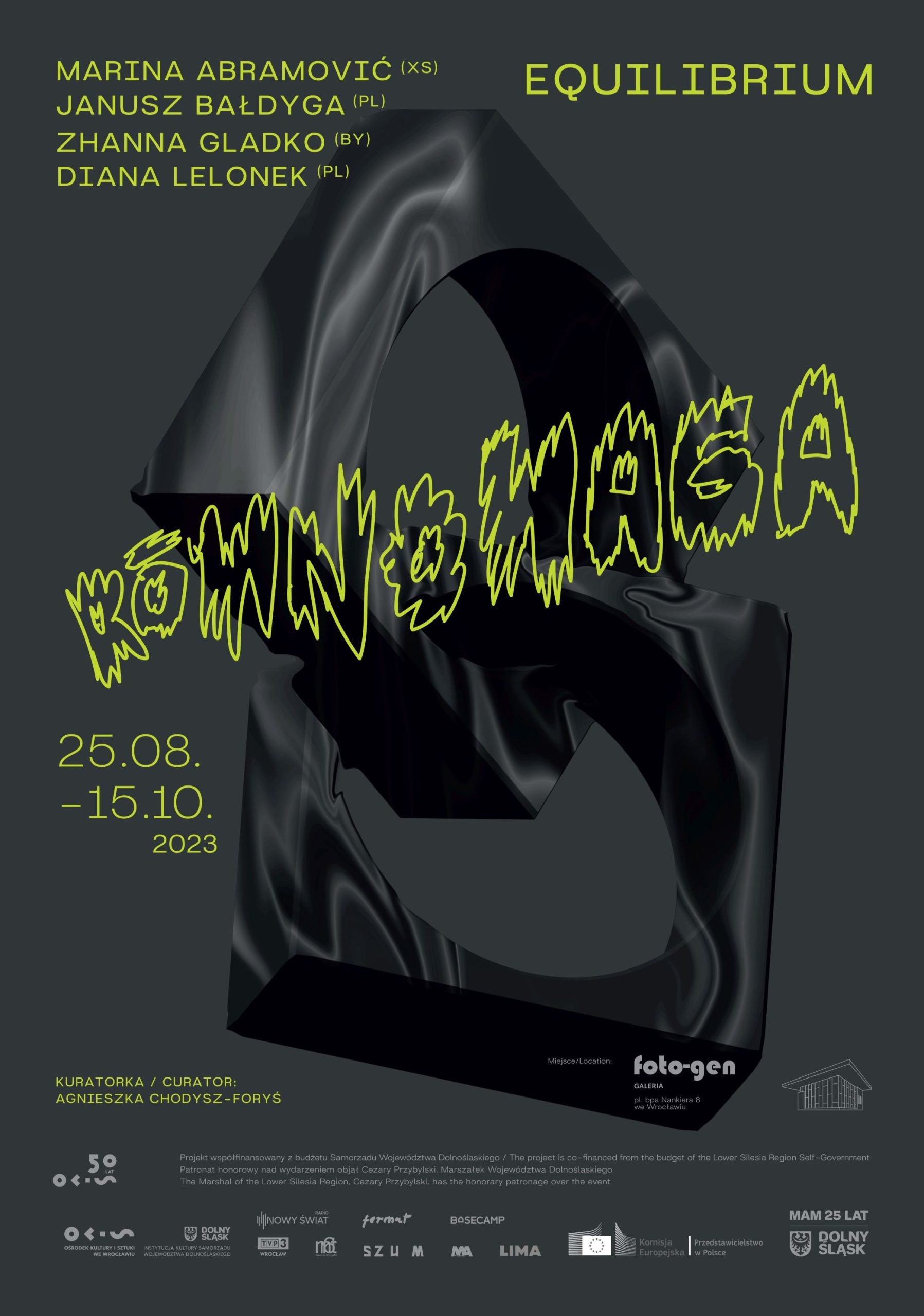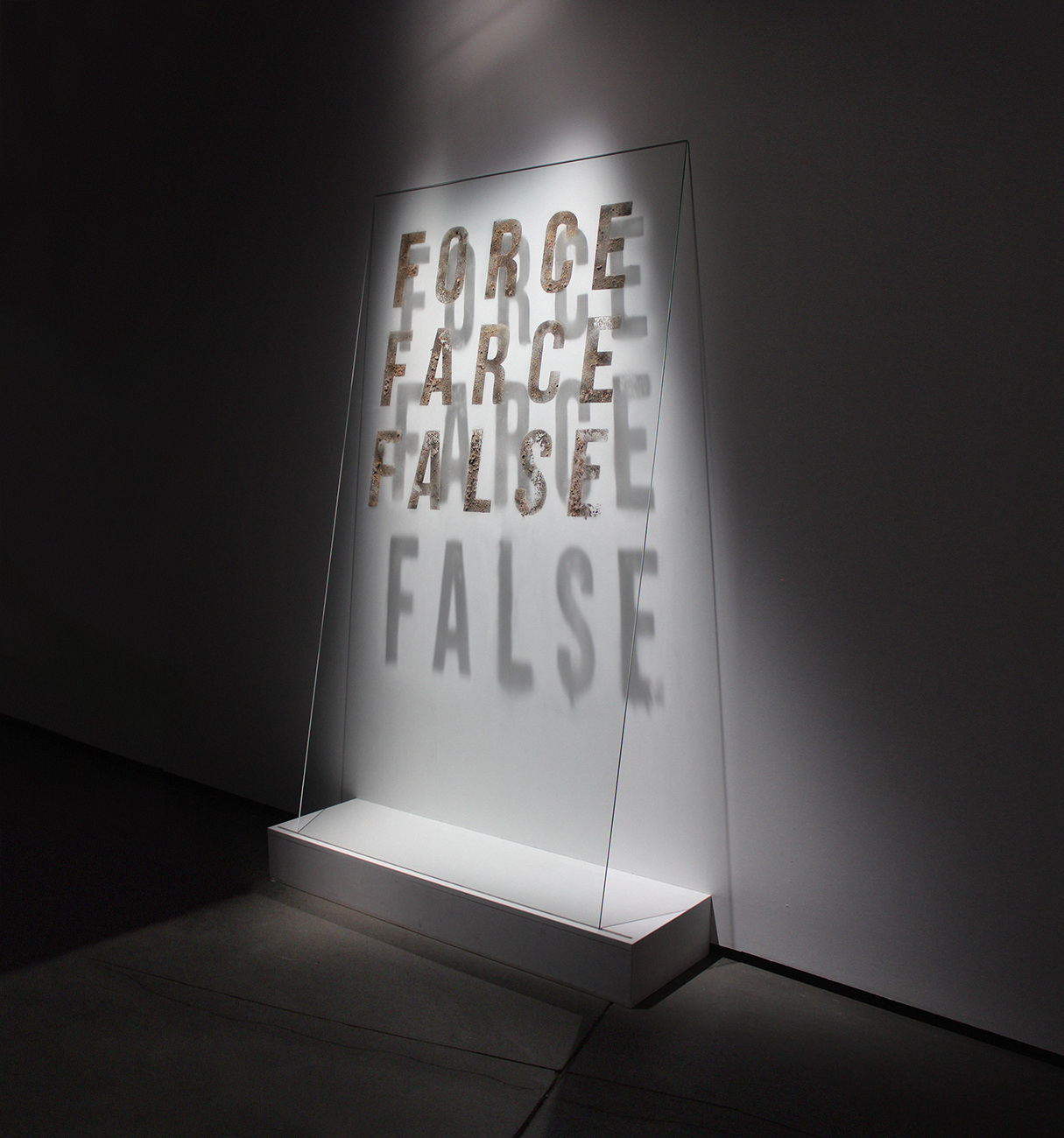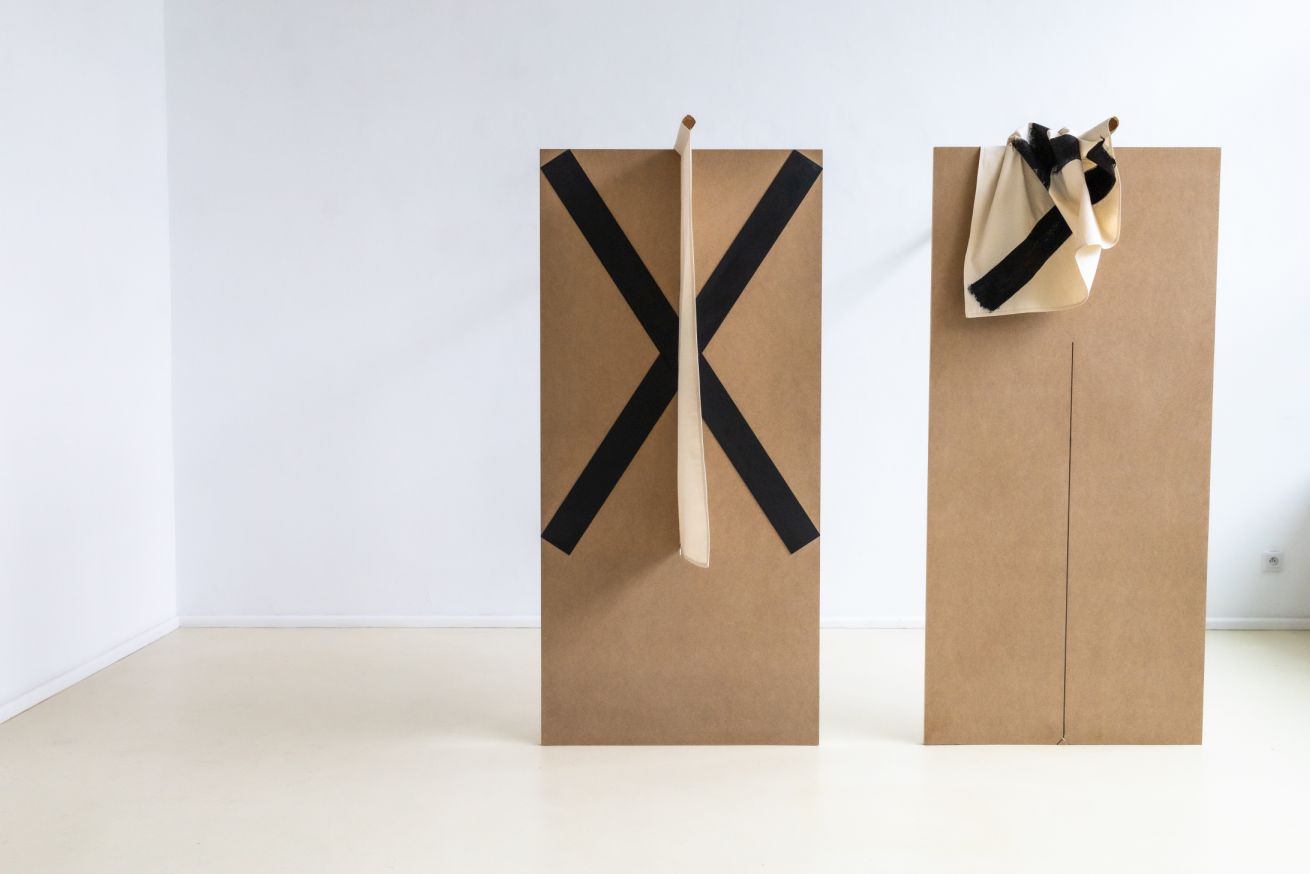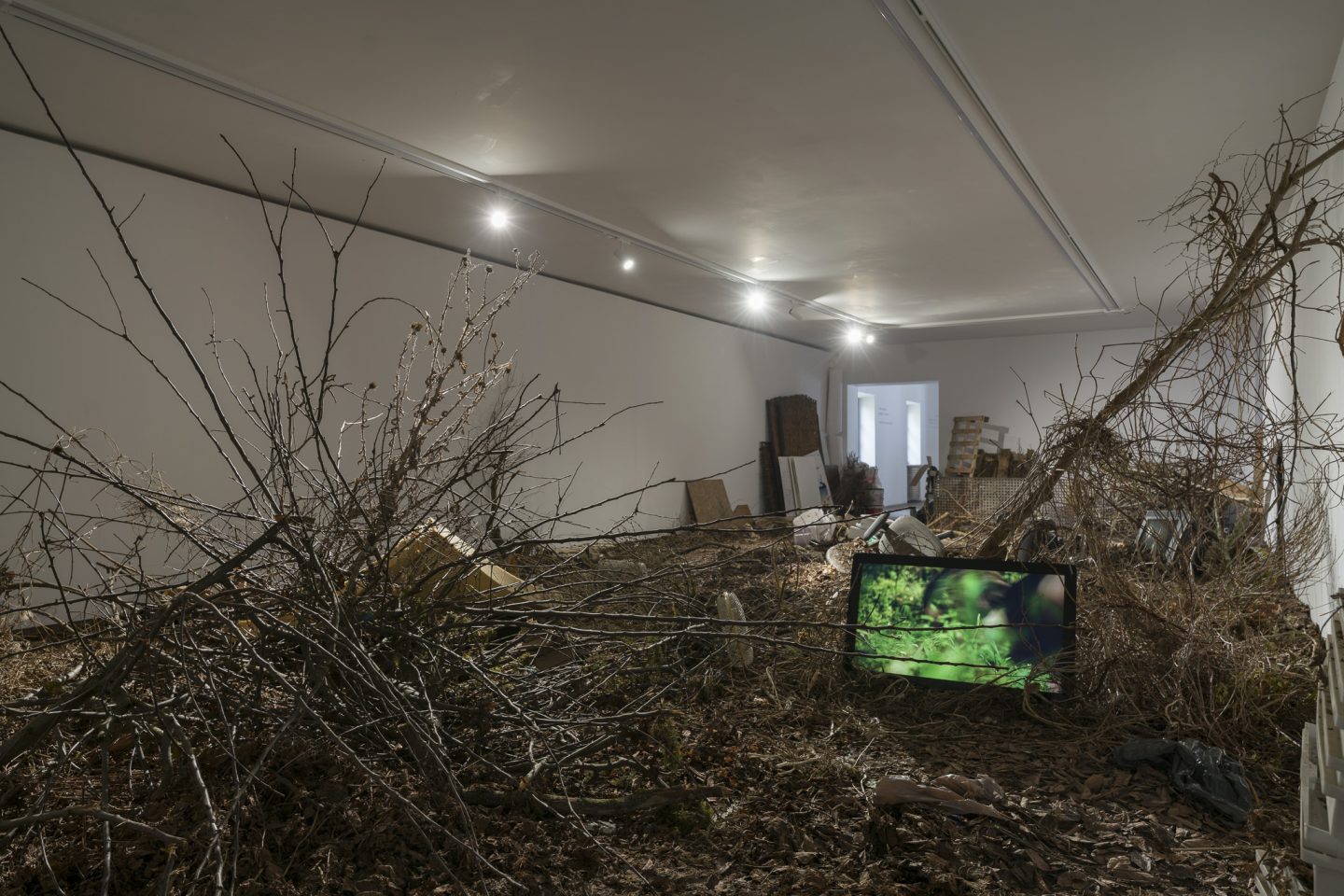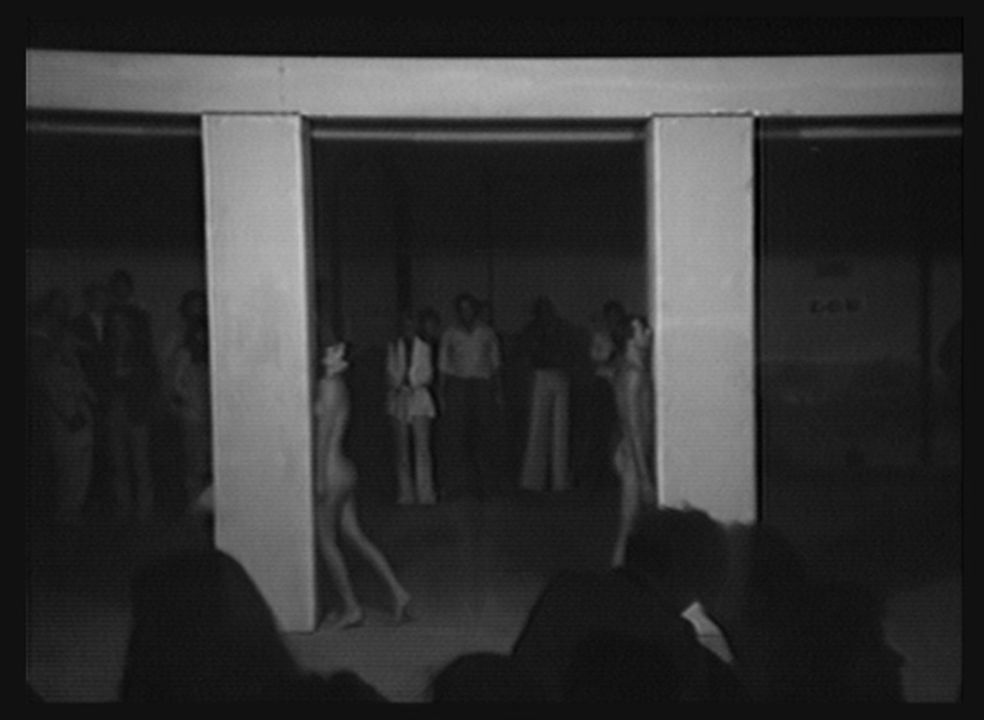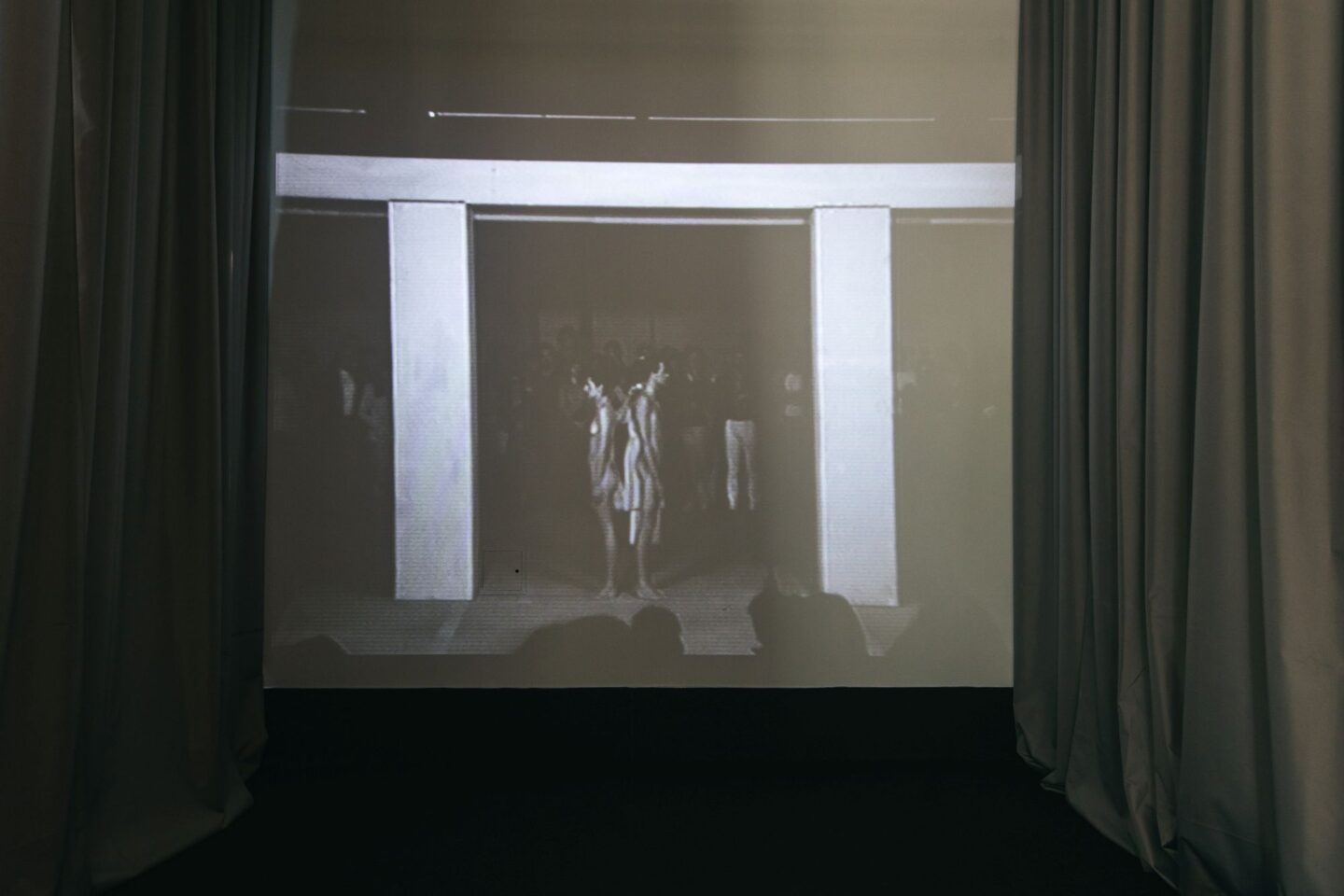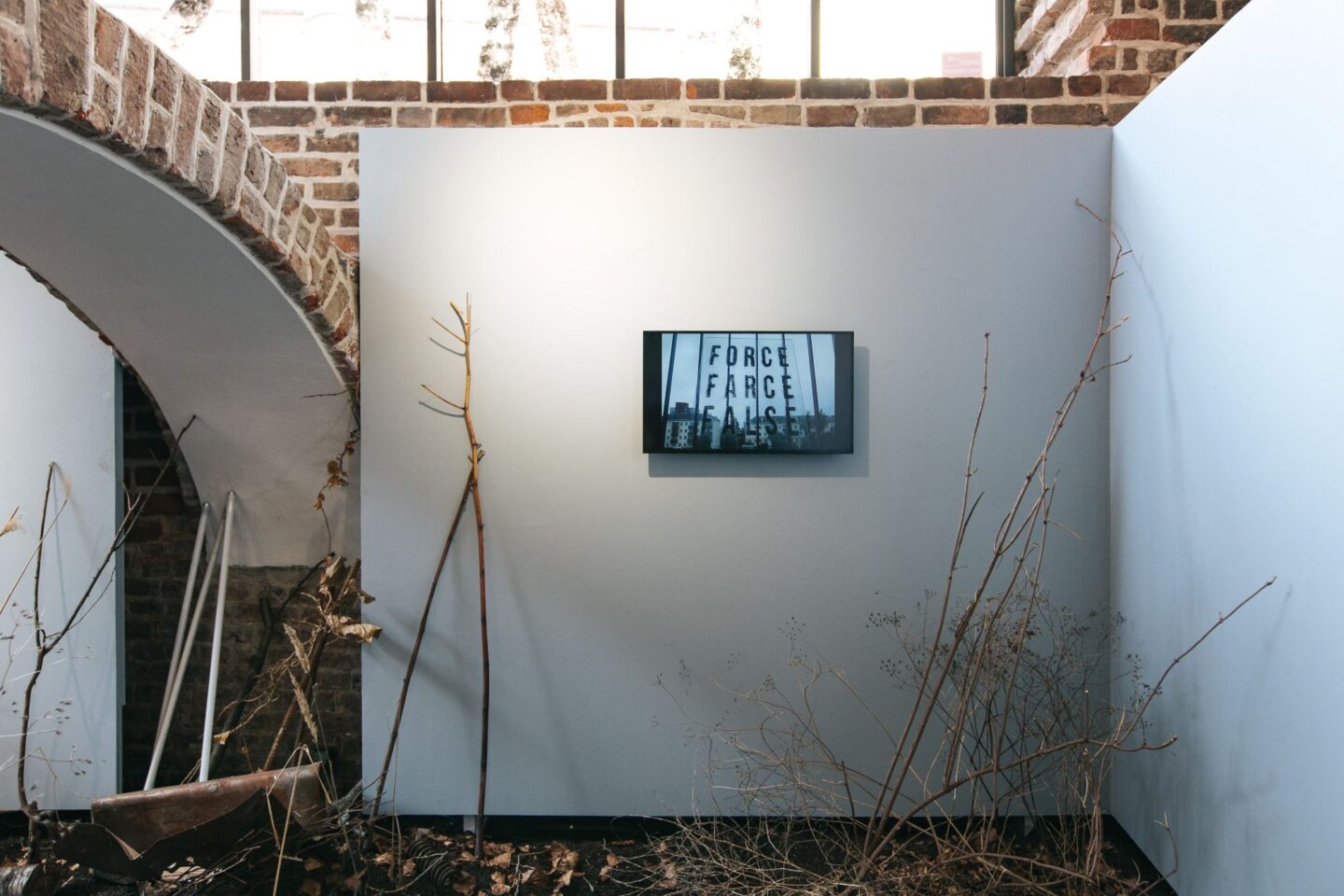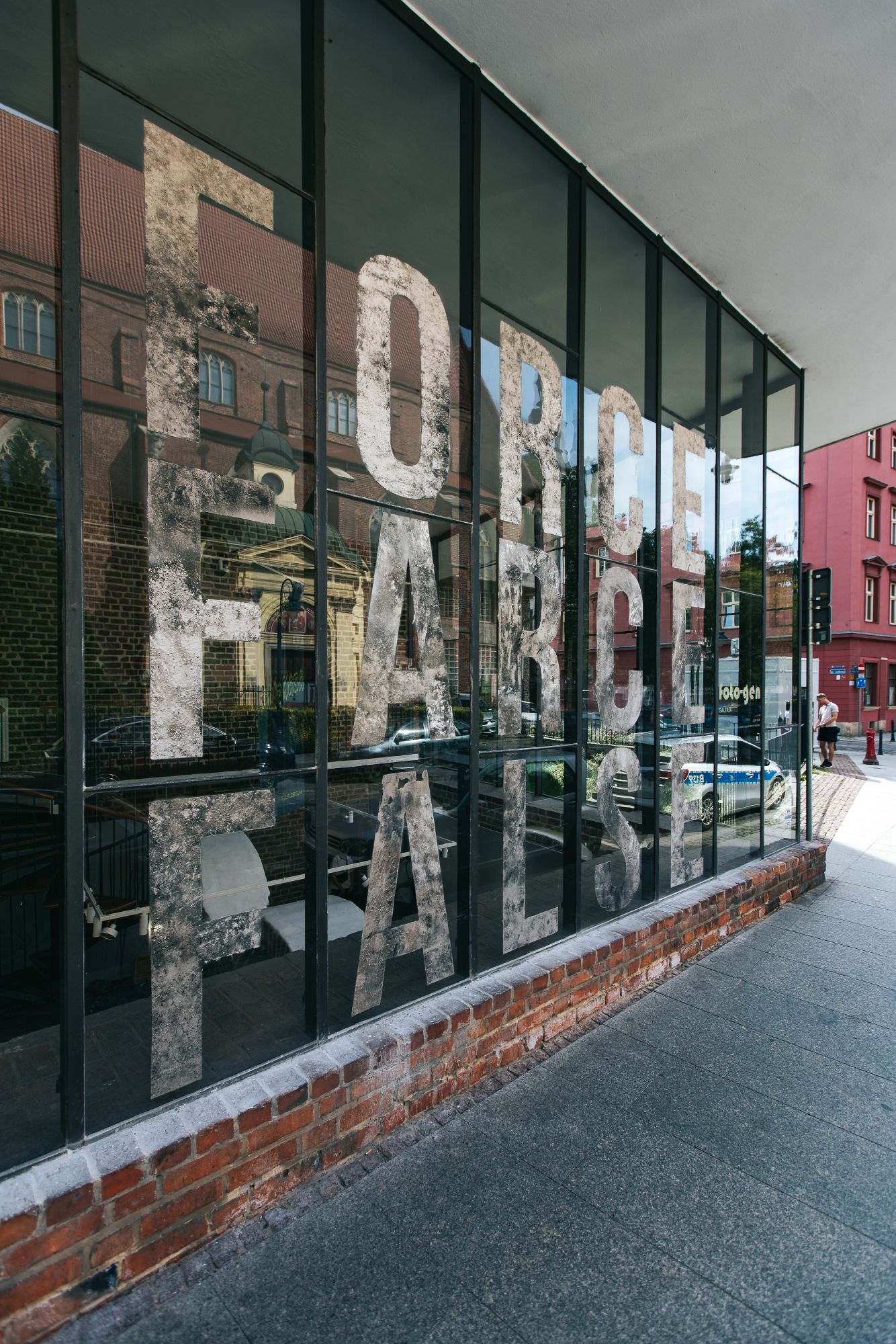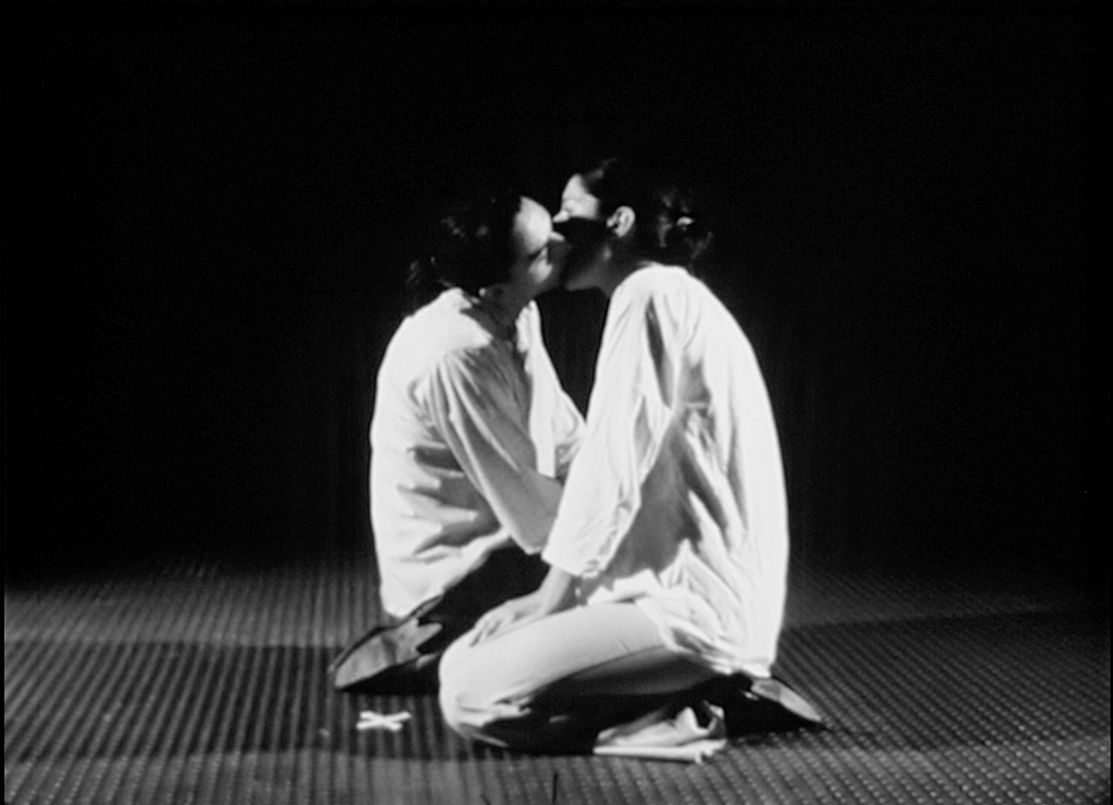
RÓWNOWAGA
Istnieje słowo – wentyl bezpieczeństwa, słowo pozorne, fałszywe, będące zasłoną dymną dla powszechnego okrucieństwa. To „równowaga”. Powszechnie używa się tego terminu, by zdefiniować estetykę i harmonię, idealny stan spokoju, w którym prawo i bezprawie, przemoc i dobro, moc i bezsilność występują w równych proporcjach. Pojęcie to jest uznawane za kluczowe przy diagnozowaniu przyczyn destabilizacji świata, utraty balansu między technologią a naturą, kulturą a gospodarką, zyskiem a zdrowiem, potrzebą a konsumpcją czy też informacją a wolnością.
Przyjmuje się ogólnie, że dążenie do równowagi jest fundamentalną zasadą organizacji przestrzeni życiowej człowieka, a tzw. zrównoważony rozwój, na który składają się świadomość ekologiczna, przeciwdziałanie przemocy, odrzucenie modelu antropocentrycznego oraz wysiłki w kierunku rozwoju demokracji i sprawiedliwości społecznej, stanowi podstawę naszego istnienia. Z kolei utrata kontroli i destabilizacja niebezpiecznie przybliżają nas do autodestrukcji. Problem tkwi jednak w tym, że posługując się pojęciem „równowagi”, tak naprawdę unikamy odpowiedzialności za skutki naszych gestów i decyzji. Karmimy się iluzją, wchodząc w pozorną strefę komfortu, która nigdy nie ma szans realnie zaistnieć.
Słowo „równowaga” – dźwięcznie i łagodnie brzmiące – zawiera w sobie trwały dualizm. Kryje się za nim nieustanne pole bitwy, zaciekła, brutalna walka po obu stronach pojedynku, którego celem jest jedynie (bądź aż) dążenie do sytuacji, którą symbolizuje wspomniany termin. To proces, permanentny ruch i stan nieosiągalny, choć możliwy do wyobrażenia, ale tylko w skali makro, gdy bezwzględność oddziaływania na siebie przeciwstawnych sił jest na tyle odległa, by móc rozmyć się w umownej poetyce tego pojęcia.
„Równowaga”, podobnie jak inne terminy opisujące stany niemożliwe, z racji swego niedookreślenia pozwala zaledwie na próby wyobrażenia i zbliżenia się do nieosiągalnego miejsca, które się za nią skrywa: czystego, stabilnego i nieruchomego punktu idealnego balansu sił. Jest utopią, marzeniem zupełnie wyabstrahowanym z uwarunkowań środowiska, w jakim mogłaby się zdarzyć, czyli tak naprawdę pojęciem fałszywym i kalekim. Zakłada ona bezruch i wieloraki brak: bodźców, energii, reakcji; jest to stan niemożliwy w znanym nam środowisku, którym zawsze rządzi synergia.
Przyjmując, że to myśl stwarza rzeczywistość, i stojąc w obliczu tak wielu katastrof i potencjalnych zagrożeń o globalnych konsekwencjach, nasuwa się pytanie o kondycję naszej zbiorowej odpowiedzialności i wyobraźni. Czy za rzadko wyobrażamy sobie, czy niewłaściwie afirmujemy? Aby tworzyć (wymyślać) rzeczywistość, należy mieć jej świadomość. Mieć odwagę zbliżyć się do niej na tyle blisko, aby krew miała barwę czerwoną, wojna swym bestialstwem wlewała się nam do oczu, a bogacenie się kosztem życia bezbronnych nosiło miano „wyzysku”, a nie „dyplomacji”. Gdybyśmy częściej pozwalali sobie na tę odwagę, częściej też uciekalibyśmy w przeciwną stronę – tym samym rzeczywiście znaleźlibyśmy się na ścieżce ku równowadze.
Wystawa nosząca tytuł Równowaga stanowi reakcję na ostatnie, nieproste i dramatyczne, wydarzenia w naszej przestrzeni społeczno-politycznej i ogromną skalę nierówności w niemalże każdej sferze ludzkiego życia. Wybrane prace odnoszą się do kwestii społeczno-politycznych, sensualnych oraz do zagadnienia równowagi ekologicznej. Ekspozycja ta jest miejscem współistnienia elementów o symbolice mitycznej, ludzkiego zmagania z ograniczeniami cielesności, bólu, świadomości, zaufania i jej braku, granicy między życiem i śmiercią, nierównowagi w poszanowaniu i dbałości o szeroko pojęte środowisko, w którym śmierć i rozkład stają się początkiem, paliwem dla nowego życia. Prezentowane dzieła cechują się nadto bezpośrednimi odniesieniami do wojny oraz wszechobecności w polityce zakłamania, przemocy, bezwzględności, agresji, autorytaryzmu, niehumanitarnego postępowania, barbarzyństwa.
Agnieszka Chodysz-Foryś, kuratorka
Kuratorka: Agnieszka Chodysz-Foryś
Patroni medialni: Radio Nowy Świat, Magazyn Szum, Notes na 6 Tygodni, Pismo Artystyczne Format, TVP3 Wrocław
Patronat honorowy nad wydarzeniem objął Cezary Przybylski, Marszałek Województwa Dolnośląskiego
Projekt współfinansowany z budżetu Samorządu Województwa Dolnośląskiego
MARINA ABRAMOVIĆ urodziła się w 1946 roku w Belgradzie w Jugosławii. Jeszcze jako studentka Akademii Sztuk Pięknych w Belgradzie w latach 70. zaczęła wykorzystywać performans jako formę sztuki wizualnej, w której ciało jest traktowane zarówno jako temat, jak i medium. W swojej twórczości bada fizyczne i psychiczne granice istnienia oraz dąży do emocjonalnej i duchowej transformacji, przez co niejednokrotnie narażała się na ból, wyczerpanie i niebezpieczeństwo. Obok m.in. Bruce’a Naumana, Vito Acconciego i Chrisa Burdena, jest autorką jednych z najbardziej pamiętnych wczesnych prac performatywnych.
Jest założycielką Instytutu Mariny Abramović (MAI), będącego platformą łączącą artystów tworzących niematerialne i oparte na czasie prace oraz intelektualistów ze wszystkich dziedzin. Instytut w pełni zaprezentował swój potencjał podczas zorganizowanej we współpracy z NEON wystawy „As One” w Muzeum Benaki w Atenach w 2016 roku. Abramović była jedną z pierwszych artystek wykorzystujących performans, które zostały formalnie zaakceptowane przez instytucjonalny świat muzeów i docenione dużymi wystawami indywidualnymi odbywającymi się w całej Europie i Stanach Zjednoczonych przez ponad 25 lat. Jej pierwsza europejska retrospektywa pt. „The Cleaner” została pokazana w Moderna Museet w Sztokholmie w 2017 roku, a następnie w Louisiana Museum of Modern Art w Kopenhadze, Henie Onstad, Sanvika w Norwegii (2017), Bundeskunsthalle w Bonn (2018), Centrum Sztuki Współczesnej w Toruniu (2019) i Muzeum Sztuki Współczesnej w Belgradzie (2019). Jej opera „7 Deaths of Maria Callas” miała premierę w Bayerische Staatsoper w Monachium w 2020 roku, a kolejne przedstawienia odbyły się w Palais Garnier w Paryżu oraz w Greckiej Operze Narodowej w Atenach w 2021 roku. W 2023 roku Abramović będzie pierwszą artystką, której twórczość stanie się przedmiotem dużej wystawy indywidualnej w Królewskiej Akademii Sztuk Pięknych w Londynie.
Marina Abramović mieszka i pracuje w Nowym Jorku.
JANUSZ BAŁDYGA (ur. 1954 w Lublinie); w latach 1974-79 studiował w ASP na Wydziale Malarstwa w Warszawie. Dyplom uzyskał w 1979 w pracowni prof. Stefana Gierowskiego. Członek i współzałożyciel grupy artystycznej PRACOWNIA (1976-81), współprowadzący z Jerzym Onuchem i Łukaszem Szajną Galerię Pracownia w Studenckim Centrum Środowisk Artystycznych Dziekanka (1976-79) w Warszawie. Od 1979 jest członkiem teatru Akademia Ruchu. Obecnie jest pedagogiem w Uniwersytecie Artystycznym w Poznaniu gdzie prowadzi Pracownię Sztuki Performance na Wydziale Rzeźby. Jest autorem rysunków, obiektów, instalacji, performance i działań ulicznych. Brał udział w licznych wystawach, sympozjach i manifestacjach artystycznych w kraju i za granicą m.in. w Galerie Donguy, Paryż, CSW Zamek Ujazdowski, Warszawa, Interdruck Schipper Patitz, Lipsk, Galerii Awangarda BWA, Wrocław, Galerii Labirynt 2, Lublin, Galeria Wschodnia, Łódź, Ośrodku Działań Artystycznych, Piotrków Trybunalski oraz licznych projektach w Niemczech, Holandii, Szkocji, Austrii, Rosji, Tajwanie, Białorusi, Szwajcarii, Izraelu, Norwegii, Hiszpanii, Japonii, Indonezji, Kanadzie, USA.
Janusz Bałdyga zajmuje się w sztuce przede wszystkim działaniami typu performance. Wypracowywał swój oryginalny charakter wypowiedzi artystycznych, w których konsekwentnie redukuje język i środki artykulacji, kreatywnie wykorzystując proste elementy tworząc z nich elementarne struktury – linię, okrąg, prostokąt, punkt. Bałdyga posługuje się pojęciem „miejsca znaczone”, w których ogromne znaczenie ma wyczucie przestrzeni i jej uwarunkowań oraz dynamika, jaką wnosi w nią obecność człowieka. Ciało artysty staje się również elementem konstrukcyjnym, narzędziem opisania przestrzeni, świadectwem zmagania się z materią (Wychylenia, Uwaga granica). Balansowanie wokół punktu krytycznego i próba uaktywnienia sfery utajnionej nieustannie towarzyszy jego działaniom. Prace performatywne Bałdygi w dużym stopniu nasuwają poczucie wciągania widza w przestrzeń i przebieg rytuału. Ich podtekst społeczny, polityczny czy filozoficzny nie pozostawia wątpliwości co do kraju i tradycji pochodzenia artysty, a zarazem nie zaciera uniwersalnego wymiaru tak bardzo indywidualnych komunikatów. Jak sam twierdzi: „Nie jestem komentatorem, ale sprawcą konkretnej sytuacji, która z całą pewnością usytuowana w konkretnym czasie i przestrzeni nie może być wolna od odniesień społecznych i politycznych”.
ZHANNA GLADKO w latach 2003–2008 studiowała na Wydziale Grafiki Sztalugowej w Białoruskiej Państwowej Akademii Sztuk Pięknych. Od 2010 roku rozwija swoją twórczość artystyczną, biorąc udział w licznych wystawach. W swoich pracach często wykorzystuje strategię tworzenia ambiwalentnych obrazów w celu poddania refleksji i dekonstrukcji obszernych zagadnień, takich jak funkcjonowanie sztuki i społeczeństwa, religia i kultura, historia i pamięć, polityka płci, analiza roli współczesnego muzeum, kryzys tożsamości itp. Przyglądając się tym zagadnieniem przez swoje prywatne doświadczenia, Gladko celowo je profanuje, a jednocześnie uaktualnia i rozszerza ich rozumienie.
DIANA LELONEK jest absolwentką wydziału Komunikacji Multimedialnej Uniwersytetu Artystycznego w Poznaniu (2014), gdzie ukończyła też Interdyscyplinarne Studia Doktoranckie, doktorat w zakresie sztuk wizualnych (2019). W swoich pracach odnosi się do relacji ludzkiego i innych gatunków, redefinicji pojęcia Natury. Używa różnych mediów od fotografii, obiektów, instalacji po zielarstwo i produkcję soków. Laureatka wielu nagród m.in. Paszport Polityki (2019), Nagroda Fundacji Vordemberge-Gildewart (2018), Dorothea von Stetten Kunstpreis (2022), Show Off na Miesiącu Fotografii w Krakowie (2014), ReGeneration 3 w Musée de l’Elysée w Szwajcarii (2014), Nominacja do Talentów Trójki (2017), Nominacja do Grand Prix Fotofestiwal (2018). Swoje prace pokazywała m.in. na The Edith-Russ-Haus gallery, Oldenburg; Culturescapes Festival, Bazylea; w Centrum Sztuki Współczesnej Zamek Ujazdowski; Galerii Arsenał, Białystok; Le Musée de l’Elysée, Lozanna; MOCAK, Kraków; Miesiąc Fotografii w Krakowie; Temporary Gallery, Kolonia; Museo Amparo, Meksyk; Tokio Photographic Art Museum; Tallin Art. Hall; WRO Biennale; Kunstmuseum Bonn; Tinguely Museum, Bazylea.
15.08, g. 18.00
wernisaż
14.09, g. 17.00
oprowadzanie kuratorskie
wstęp wolny
27.09, g. 18.00
blok perfomens
Instytut im. Jerzego Grotowskiego we Wrocławiu
13-14.10, g. 14.00-16.00
panele dyskusyjne
DCF Piano Bar
11.10, g. 17.00
oprowadzanie kuratorskie
wstęp wolny


